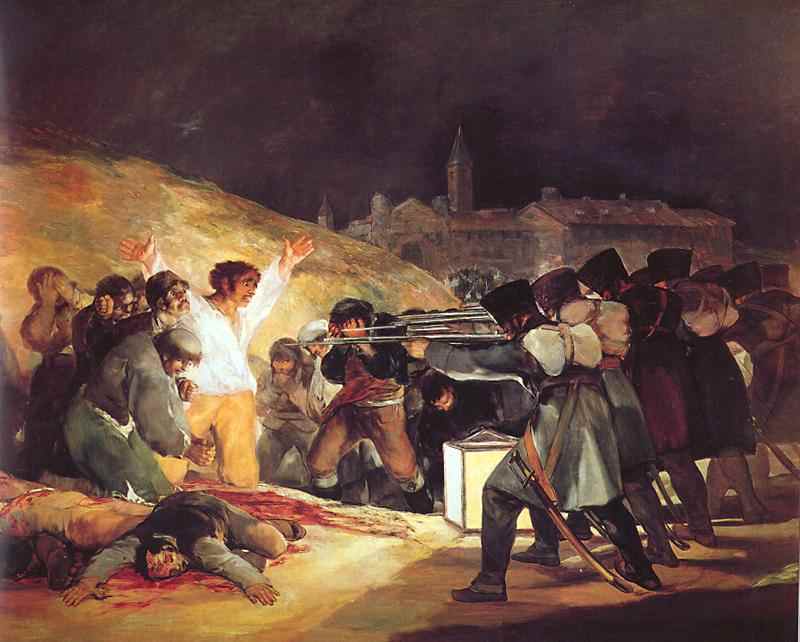
Art and Society Through the Ages,
Archbishop Williams High School
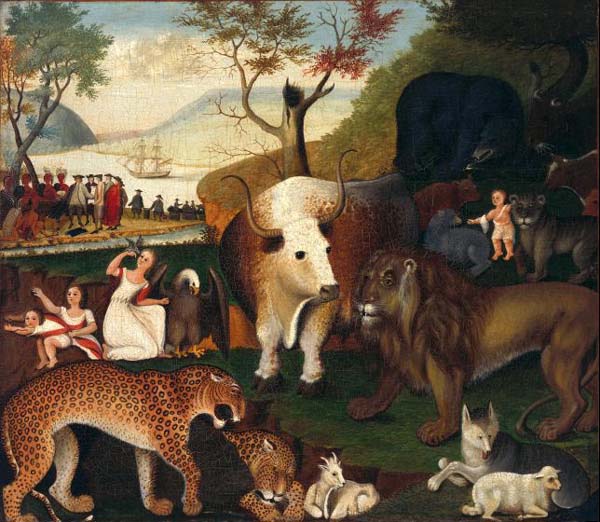
Fine Arts Museums of San Francisco
Finding the Language of Peace
Anne Dalke

Art and Society Through the Ages, Archbishop Williams High School |

Fine Arts Museums of San Francisco |
If war
Is the answer
Should we ask
Another question?
To what question is peace the answer?
My opening claim(s):
that the language of war is the language of assertion, and
the language of peace the language of questioning,
which refuses the clarity of a single right answer.
I draw, in making this claim, on A Feminist Ethic of Risk, by Sharon Welch:
"one belief, more than any other" is responsible for the age-long slaughter of individuals, the wars of all the centuries, as well as the more recent spate of terrorists attacks. "It is the belief that those who do not share my faith - or my race or my ideology - do not share my humanity.... The critical question" is whether we will make room for the other, the stranger, in other words, "acknowledge the dignity of difference....Nothing has proved harder in the history of civilization than to seek (the image of) God ... in those whose language is not mine, whose skin is a different color, whose faith is not my faith and whose truth is not my truth."
I believe it is a time for a new "generosity of spirit"....A time to really and truly understand "that God transcends the particularities of culture and the limits of human understanding ..., a time to believe in and commend to others a God who is above us all, "teaching us to make a space for one another...."
what would it be like to have such a faith? "It would...be like being secure in one's own home, yet moved by the beauty of foreign places, knowing that they are someone else's home, not mine, but still part of the glory of the world that is ours."
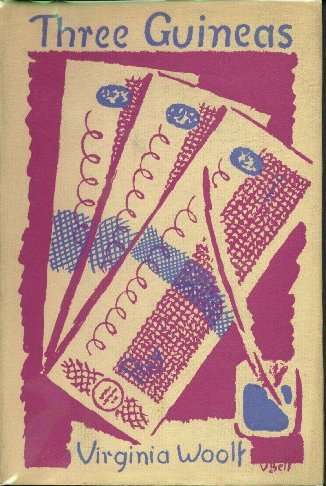
she demonstrates that three requests for contributions--
to support women's education, a professional women's organization, and the peace effort--
are inherently linked:
"to emphasize superiority...rouses competition and jealousy...which encourage a dispostion towards war. We can refuse all such distinctions ourselves. (21)
Do we wish to join that procession, or don't we? On what terms shall we join that procession? Above all, where is it leading us, the procession of educated men? (62)
The professions have a certain undeniable effect upon the professors. They make the people who practise them possessive, jealous of any infringement of their rights, and highly combative. (66)
This is an awful mind- and soul-destroying life....Sight goes....sound goes...Speech goes...Humanity goes...Health goes...What then remains of a human being who has lost sight, sound, and sense of proportion? Only a cripple in a cave. (70-2)
How can we enter the professions and yet remain civilized human beings...who wish to prevent war? (75)
[She ends w/ a refusal] to be separated from the four great teachers of the daughters of educated men--poverty, chastity, derision and freedom from unreal loyalties." (79)
Peacekeeping Stories: In the third chapter [of Acts of Meaning], "Entry into Meaning," Jerome Bruner says..."In human beings, with their astonishing narrative gift, one of the principal forms of peacekeeping is the human gift for presenting, dramatizing, and explicating the mitigating circumstances surrounding conflict-threatening breaches in the ordinariness of life. The objective of such narrative is not to reconcile, not to legitimize, not even to excuse, but rather to explicate....To be in a viable culture is to be bound in a set of connecting stories, connecting even though the stories may not represent a consensus"....It occurs to me that this is why I am a professor of literature: by fostering the telling of stories, my vocation can be a means of negotiating the peace, of peacemaking and peacekeeping.
What IS peace?
(With thanks to Dan Snyder from Pendle Hill):
a query directed to the title of this conference
and of Gerald's book Teaching Peace: Nonviolence and the Liberal Arts ,
which equates (?) peace and nonviolence:
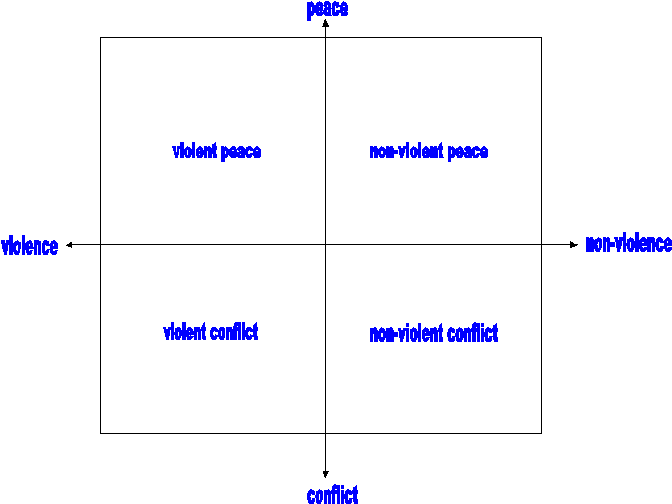
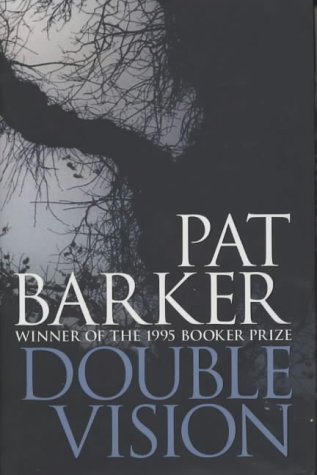
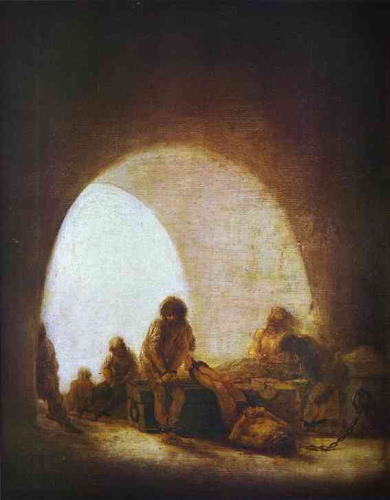
| WAR WITHOUT/PEACE WITHIN"...on balance it was a dark place, she thought, full of unmastered cruelty. She came out of it hungry for the Goya. It was so small, not much larger than a sheet of typing paper, all the colours subdued. The interior of a prison, seven men in shackles, every tone, every line expressing despair...does the photograph of an atrocity ever inspire hope? This did. These men have no hope, no past, no future, and yet, seeing this scene through Goya's steady and compasionate eye, it was impossible to feel anything as simple or as trivial as despair....'I suppose that's how he survived.' Yes...otherwise...Deafness. The war. 'Mind you, when you look at the "black paintings" you wonder if he did survive.' 'Have you noticed how noisy his paintings are? You normally don't think of paintings as making any sound, but they absolutely roar at you.' 'Yes. I think his deafness must've been the sort where you have horrible meaningless noises all the time. But then, of course, he was very good at diverting himself...therapists are quite scathing about "taking your mind off it," but there's no doubt it works....It worked for him.'" |  Goya's Saturn Devouring His Son Goya's Saturn Devouring His Son |
There never was a war that was |
PEACE WITHOUT/WAR WITHIN"...she'd bought him a print of one of Edwards Hicks's Peaceable Kingdom series. 'There,' she'd said, pointing to a lion in the foreground. 'That's you'....The lion is surrounded by lambs, sheep, cows. They aren't afraid of him--though one or two look wary--and he isn't attacking them. God's reign has begun. Only the lion's eyes are full of anguish, the strain of denying his own nature, reinventing himself, second by second: an act of pure will. And the balance is precarious. He remembers the taste of blood. He's afraid of himself. The pupils are huge, black, dilated with pain. On the left of the picture, William Penn is concluding his treaty with the Indian, sealed without an oath and never broken, but the struggle against violence has simply moved back into the individual human mind, and those eyes tell you that victory is far from certain. 'That's you,' she'd said, and kissed him." |  |
A few guidelines:
The language of peace is...
not dogmatic
forgoes "truth"
encourages "forgetfulness"....
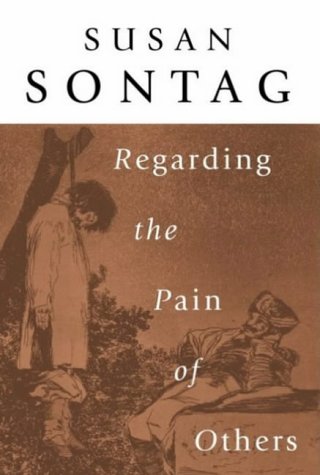
No "we" should be taken for granted when the subject is looking at other people's pain....for many antiwar polemicists, war is generic....To the militant, identity is everything....there is shame as well as shock in looking at the close-up of a real horror. Perhaps the only people with the right to look at images of suffering of this extreme order are those who could do something to alleviate it...the rest of us are voyeurs....In each instance, the gruesome invites us to be either spectators or cowards, unable to look....People want to be able to visit--and refresh--their memories. Now many victim peoples want a memory museum, a temple that houses a comprehensive, chronologically organized, illustrated narrative of their sufferings...why is there not already...a Museum of the History of Slavery?....This, it seems, is a memory judged too dangerous to social stabilty to activate and to create....Harrowing photographs do not inevitably lose their power to shock. But they are not much help if the task is to understand. Narratives can make us understand.....Perhaps too much value is assigned to memory, not enough to thinking. Remembering is an ethical act...there is simply too much injustice in the world....To make peace is to forget. To reconcile, it is necesary that memory be faulty and limited. If the goal is having some space in which to live one's own life, then it is desireable that the account of specific injustices dissolve into a more general understanding that human beings everywhere do terrible things to one another.
includes not only forgetfulness, but silence,
is dialogic (that is, invites others' stories), and
includes multiple axes of value=interpretation.
Let's give it a try: reading
Beyond our individual histories...
some possible contexts for reading The Cat in the Hat Comes Back:
William Spaulding, director of the education division at Houghton Mifflin...asked Geisel to write a story that used only a limited number of similar words, words recognizable by a first grader....The success of "The Cat in the Hat" persuaded [Random House's publisher, Bennett] Cerf to start a division...called Beginner Books....
The cat's improvisations with the objets trouves in the home he has invaded are obviously an allegory for his creator's performance with the two hundred and twenty arbitrary words he has been assigned by his publisher. The cat is a bricoleur. He has no system--or, rather, his system is to have no system. He is compelled to make meaning from whatever is there. He fails, the bricolage topples, the fish ends up in a teapot; and this hint of semantic instability is expanded on in Dr. Seuss's most difficult work (No. 26 all-time), "The Cat in the Hat Comes Back," published in 1958...."The Cat in the Hat Comes Back" is the "Grammatology" of Dr. Seuss. It is a book about language and structure, those Cold War obsessions....
These semiotic felines do exactly what a deconstructionist would predict: rather than containing the stain, they disseminate it. Everything turns pink. The chain of signification is interminable and, being interminable, indeterminate. The semantic hygiene fetishized by the children is rudely violated; the "system" they imagined is revealed to have no inside and no outside. It is revealed to be, in fact, just another bricolage. The only way to end the spreading stain of semiosis is to unleash what, since it cannot be named, must be termed "that which is not a sign." This is the Voom, the final agent in the cat's arsenal. The Voom eradicates the pink queerness of a textuality without boundaries; whiteness is back, though it is now the purity of absence--one wants to say (and, at this point, why not?) of abstinence. The association with nuclear holocaust and its sterilizing fallout, wiping the planet clean of pinkness and pinkos, is impossible to ignore. It is a strange story for teaching people how to read.
This exercise in generating and adjudicating different interpretations came from
The Story of Evolution/The Evolution of Stories: Exploring The Significance of Diversity
which itself evolved from
Questions, Intuitions, Revisions: Telling and Re-Telling Stories About Ourselves In the World
which in turn derived in part from
Culture as Disability
all of which was perhaps most clearly expressed in the 9/11 Forum:
What the events of 11 September 2001 reveal is the existence of a very angry and very well-organized group of human beings with access to quite significant resources who were largely invisible to, or at least ignored by, most of us. It is . . . their estrangement from large segments of the rest of the human community which is perhaps the most important reality laid bare by the events of 11 September 2001. In an ever-shrinking world in which technology puts ever greater power in the hands of individuals, we cannot any longer afford to act in ways that cause humans to become estranged from one another or to ignore estrangements when they occur.
We are a human community, and among our greatest strengths is the differences among us . . . . We need to hear each others' stories, so that we can better tell and retell our own and, in doing, contribute our own pieces to the continually evolving human story . . . . There is no way to guarantee well-being, safety, security, happiness. But we can get less wrong, learn from the past, not remake mistakes by which humans themselves worsen rather than lessen human vulnerability. It is a time to take the time to feel and reflect and think, to tell and listen to each others' stories, to commit ourselves anew to finding ways to tell our collective human story in a way from which no one feels estranged.
--Paul Grobstein, For Serendip, 12 September, 2001

Goya's Dog Trapped in Quicksand
A range of (possible) additional contexts for your reading:
 |  |  |
Can you describe this sequence of paintings in language that is generative of peace?
What does the language of peace sound like?
Would you recognize it if you heard it?
Can you hear it....?
|
James Juhnke began the next plenary session on "Nonviolence and History" by asking, "How great is the distance between Bryn Mawr and Bluffton?" The distance between the "perspectival" view presented above, and the claim that "truth makes free," Jim suggested, had not "evaporated." He invited from participants further questions raised for them by "Finding the Language of Peace," and they offered these:
Jim suggested that paying attention to the "people who were pushed off the stage by the winners of debates" about the creation of nationhood, recapturing those "moments of decision when peace might have broken out," engaging in "what if history" (also known as "counterfactuals"), might actually get us closer to the truth of what happened. He ended by calling for a comprehensive reconstruction of American national history. |